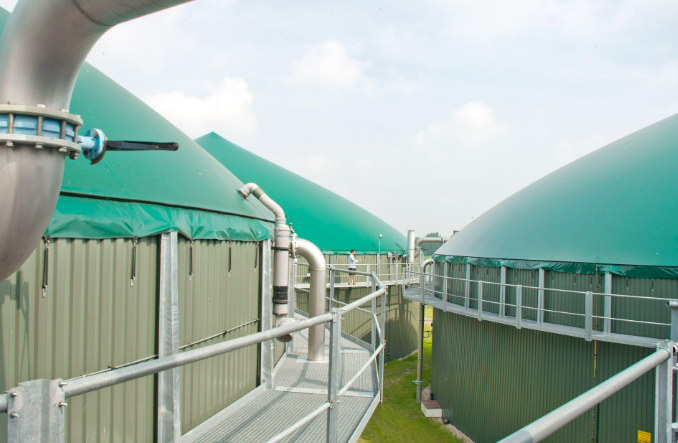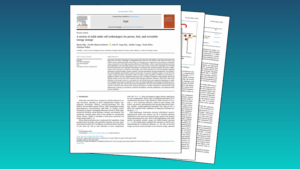The escalating energy crisis and geopolitical tensions, fueled by Russia’s invasion of Ukraine, have recently intensified efforts to find alternative energy sources in EU countries. In this context, biomethane has begun to be perceived as a viable option to replace natural gas imports, and as a result of this situation, the European Commission revised its earlier plans for developing biomethane production to diversify energy sources more quickly and become independent of imports of fossil fuels.
The article ‘Development of the Biomethane Market in Europe’, published in Energies magazine in February 2025, reviews the biomethane market situation in the European Union, focusing on issues such as biomethane production technologies, current and future supply and demand for biomethane, and biomethane production costs, with particular emphasis on upgrading processes and financial support systems used in EU countries.
The review of available studies on biomethane showed that this market has developed very poorly until now. However, both supply and demand have a high growth potential, and the existing technological possibilities enable biomethane production in an economically justified way. Thus, one can expect a significant acceleration in the development of this sector. In 2019, biomethane covered less than 4% of the EU’s demand for natural gas. The Biomethane Action Plan assumes doubling biomethane consumption in the EU Member States by 2030 (from 17 to 35 bcm). The expected increase in biomethane use is determined by the need to increase energy security and environmental and economic considerations.
Besides, traditional biogas combustion in a cogeneration unit (CHP) and electricity generation is a low-efficiency process determined by the internal combustion engine’s efficiency (about 40%). Treatment of the produced biogas in the form of biomethane allows for its long-term storage (e.g., in the gas network) and more effective management. It is expected that up to 2030, biomethane supply will be mainly based on the anaerobic digestion of waste and residual biomass from agri-business and municipal waste. After 2030, other pathways, such as the gasification of forestry residues, will help to increase further the potential to achieve over 1000 TWh per year by 2050, which would be a significant share of the future gas mix.
To date, mainly physicochemical methods have been used for treatment, the costs of which are relatively low (and usually account for about 20–40% of the total cost of biomethane production). Methods based on methanation are much more expensive, consisting of binding CO2 present in biogas with hydrogen, increasing methane production, and preventing CO2 emissions. In the long-term perspective, the legitimacy of such an upgrading method will be determined by the costs of obtaining hydrogen (it can be expected that in the long term, they will decrease, which will increase the attractiveness of methanation as a method of biogas treatment).
In addition to the costs of upgrading, the key factors determining the economic viability of biogas production include the costs of biogas production itself, among which the costs of obtaining the raw material (which can be very different depending on the origin of the raw material) are of key importance. Investment costs are also very important from an economic point of view. The investment costs of both the biogas production section and the treatment section depend on the production scale (capacity)—the larger the plant, the higher the unit costs (there is the phenomenon of economies of scale). In general, available estimates indicate that over the next few years, natural gas prices will be higher than the estimated average biomethane production costs, which indicates this activity’s profitability.
However, it should be remembered that both the prices of natural gas and the costs of biomethane production are burdened with a very high level of uncertainty, making a long-term assessment of biomethane production profitability difficult. The mentioned problems and uncertainties are a big challenge for the policy of support with public funds. Developing a system of incentives with possibly rational spending in such a volatile environment requires much effort and perceptiveness by policymakers. The rules regarding the support for producing renewable energy other than electricity give Member States much freedom in shaping the way of supporting biomethane. This also applies to the issue of determining the amount of support.
Source: Article in Energies magazine ‘Development of the Biomethane Market in Europe’




